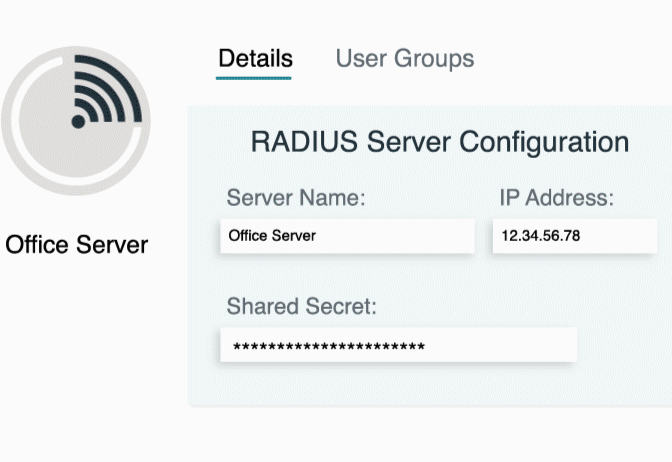Updated on May 21, 2025
Switch spoofing is a VLAN hopping attack that exploits misconfigurations in network switches to bypass VLAN isolation.
This article will explore the key concepts of switch spoofing, how it works, its potential impacts, and actionable strategies to defend your network.
Understanding Switch Spoofing and VLAN Hopping
Switch spoofing is a network attack where an attacker sets up their device to look like a legitimate network switch. This tricks the target switch into creating a trunk link, which is designed to carry traffic from multiple VLANs. As a result, the attacker gains access to VLAN traffic they shouldn’t be able to see, bypassing VLAN isolation.
Switch spoofing is one of several VLAN hopping techniques, along with methods like double-tagging, which also take advantage of VLAN tagging to gain unauthorized access. These attacks undermine VLAN segregation by exploiting how trunk and access ports are configured.
The Role of VLAN Tagging and Trunking
Switch spoofing relies on weaknesses in how trunk links are dynamically configured. To understand it, here’s what you need to know about VLAN tagging and trunking:
- VLAN tagging adds a header to network traffic that indicates its VLAN, making it possible to separate traffic logically.
- Trunk links are switch ports set up to carry traffic from multiple VLANs using these tags.
Switch spoofing takes advantage of how these trunk links are negotiated.
How Switch Spoofing Works
A successful switch spoofing attack typically follows these steps:
1. Sending DTP Packets
The attacker’s device sends Dynamic Trunking Protocol (DTP) packets to the target network switch. DTP is a protocol used by switches to dynamically negotiate and establish trunk links.
2. Triggering Trunk Link Formation
Upon receiving the malicious DTP packets, the target switch misinterprets the attacker’s device as a legitimate switch and configures the port as a trunk link.
3. Gaining VLAN Access
Once the attacker’s device is recognized as part of the trunk link, it gains access to traffic from multiple VLANs, effectively bypassing the isolation mechanisms.
Exploited Vulnerabilities
- Improper Trunk Port Configuration: Auto-trunking features enabled on ports create openings for attackers.
- Native VLAN: Misconfigurations in the native VLAN—the VLAN that carries untagged traffic—can add further vulnerabilities.
Key Components and Core Vulnerabilities
The main vulnerabilities exploited in switch spoofing attacks stem from improper protocol and port behavior:
Dynamic Trunking Protocol (DTP)
While DTP simplifies network configuration by enabling automatic trunk link negotiation, it also introduces a significant security risk. When left on by default, DTP leaves ports vulnerable to spoofing.
Native VLAN Misconfiguration
The native VLAN, which handles untagged traffic on a trunk link, can be a weak spot for attackers to access VLAN traffic without detection.
Misconfigured Ports
Auto-negotiating ports that remain in “dynamic desirable” or “dynamic auto” mode are prime targets for attackers, as these settings allow DTP negotiation.
Impacts of Switch Spoofing
Switch spoofing can have serious repercussions for enterprise network security. Some of the most concerning impacts include:
- Unauthorized Access: Attackers can gain access to sensitive VLAN traffic, circumventing VLAN isolation and exposing critical enterprise data.
- Traffic Interception and Data Breaches: By bridging VLANs through trunk links, an attacker can intercept traffic intended for separate VLANs, leading to potential data breaches.
- Man-in-the-Middle (MITM) Attacks: Switch spoofing opens the door to MITM scenarios, where attackers can intercept and manipulate data flows.
- Amplified Risks in Complex Networks: Enterprise networks with extensive VLAN configurations and legacy switches are especially vulnerable, as they often rely on outdated or poorly maintained configurations.
Mitigation Strategies for Switch Spoofing
Preventing switch spoofing attacks requires proactive configuration and monitoring. Below are some actionable strategies to secure your network:
Disable DTP on Access Ports
Prevent DTP packets from being sent or received by setting all ports to non-negotiating modes:
- For Cisco devices, configure ports as `switchport mode access` to ensure they cannot form trunk links dynamically.
Assign and Disable Unused Ports
- Move unused ports to an unused VLAN.
- Disable these ports (`shutdown` command on Cisco switches) to prevent unauthorized connection attempts.
Define Allowed VLANs on Trunk Ports
Explicitly specify which VLANs are allowed on trunk links using the `switchport trunk allowed vlan` command. This reduces the attacker’s ability to exploit unrestricted trunk links.
Configure a Unique Native VLAN for Trunks
Avoid using VLAN 1 (default native VLAN). Assign a unique, non-used VLAN as the native VLAN for trunk ports to limit untagged traffic vulnerabilities.
Regularly Audit Switch Configurations
Perform routine audits to identify and correct misconfigured ports. Look for:
- Ports with unnecessary “dynamic desirable” or “dynamic auto” settings.
- Unused open ports left active.
Monitor and Log Network Activity
Deploy monitoring solutions to identify suspicious port behavior or unexpected trunk link formation. Tools like IDS/IPS (Intrusion Detection/Prevention Systems) can help detect anomalous activities.
Use Cases
Understanding when and where switch spoofing attacks are likely is crucial for risk mitigation. Here are some scenarios to consider:
Legacy Network With Outdated Devices
Older network switches often default to enabling Dynamic Trunking Protocol (DTP), a feature designed to simplify the negotiation of trunk links between switches. However, this default setting can create vulnerabilities, as attackers may exploit DTP to gain unauthorized access or manipulate the network by tricking switches into forming unintended trunk links.
Poorly Segmented Networks
Environments that rely on broad, unrestricted trunk port configurations can inadvertently expose VLAN traffic to potential attackers, increasing the risk of unauthorized access or data interception. Without proper restrictions, these configurations may allow malicious actors to exploit vulnerabilities and gain access to sensitive network segments, posing a significant security threat.
Real-World Example
Consider a large organization with multiple VLANs for different departments. An employee’s computer, compromised by malware, could use switch spoofing to gain access to the finance VLAN, intercept sensitive financial data, or launch additional attacks.
Tools for Detection and Prevention
Utilize the following tools and techniques to detect and prevent switch spoofing attacks:
- Intrusion Detection Systems (IDS): DS tools can monitor for unusual DTP packets or unexpected trunk link formations.
- Static VLAN Assignments: Use commands to assign static VLAN configurations instead of relying on automatic negotiation.
- Updated Firmware: Ensure all network switches run the latest firmware to address vulnerabilities associated with legacy protocols such as DTP.
- Command-Line Hardening: Examples of protective configurations:
“`shell
switchport mode access
switchport nonegotiate
switchport trunk allowed vlan <allowed_vlans>
“`
Glossary of Terms
- Switch Spoofing: A VLAN hopping attack where an attacker emulates a switch to gain unauthorized access to VLAN traffic.
- Dynamic Trunking Protocol (DTP): A protocol used by switches to dynamically negotiate trunk links.
- Trunk Link: A switch port configured to carry traffic for multiple VLANs using VLAN tagging.
- VLAN (Virtual Local Area Network): A logical segmentation of a network into separate broadcast domains.
- VLAN Hopping: A type of network attack that bypasses VLAN isolation mechanisms.
- Native VLAN: The VLAN that carries untagged traffic on a trunk link.
- Man-in-the-Middle Attack (MITM): A type of attack where an attacker intercepts and potentially alters communication between two devices.






